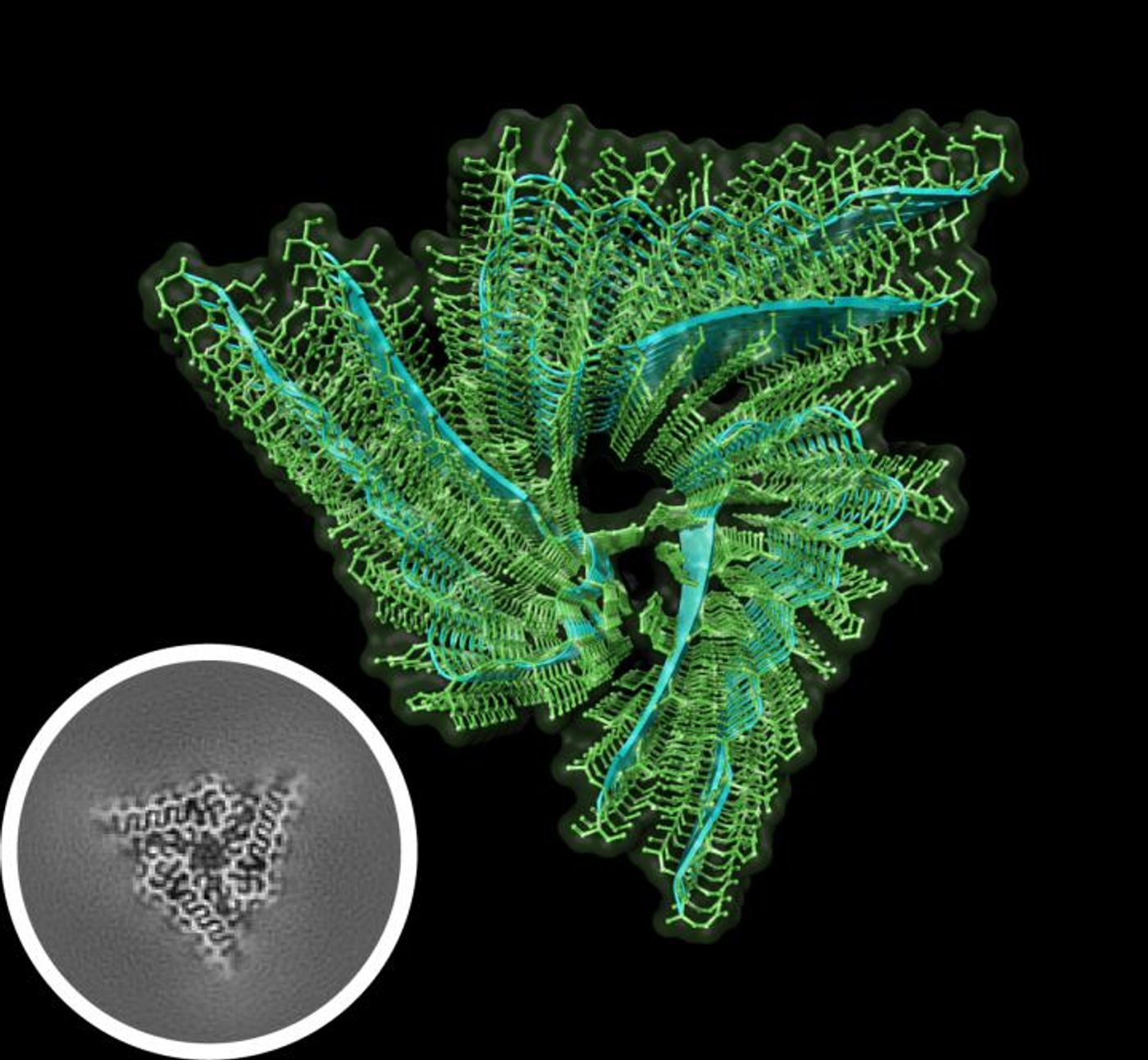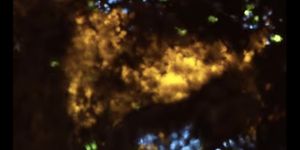Amyloids Are Linked to Disease, But One Has a Functional Role
Amyloids are aggregates of proteins that were thought to often have structural abnormalities and are linked to the development of diseases including Alzheimer's and Parkinson's. They are not typically considered to play functional roles. New work suggests otherwise.
Reporting in Science, researchers have now characterized a functional neuronal amyloid, and have described its structure at the atomic level. The amyloid is formed by aggregates of a protein called Orb2, which accumulate on their own. Orb2 is the fruit fly version of a protein that binds to mRNAs, which are molecules that typically act as intermediates between genes and proteins). Orb2 is a type of cytoplasmic polyadenylation element-binding (CPEB). The CPEB protein has been linked to the storage of long-term memories.
"We thought the usual way amyloids arise is when a protein, having for some reason gone bad or become misfolded, cues amyloid formation in a stochastic, unregulated process," explained Kausik Si, Ph.D., investigator and associate scientific director at the Stowers Institute for Medical Research. "We found instead that amyloids can form at a very specific time, in a very specific cell, in a very specific way."
Ongoing work by Si and others has shown that Orb2 amyloids and CPEB were crucial to the function of synapses, where two neurons meet and exchange signals. The CPEB/Orb2 complex can exist in different ways and carry out different functions in the brain. Often in the monomer state, it reduces translation, in which mRNA is made into proteins, at synapses. During the formation of a memory, however, the monomers aggregate and can encourage translation at the synapse, a process that is necessary for the persistence of memory.
Hervas and Si opted to use Orb2 obtained from fruit flies, rather than producing a bunch of it in bacteria, in order to preserve its normal functionality. "The original environment, the nervous system, is important to preserve the active conformation of the protein, as well as its most interesting properties - relating to its ability to self-aggregate and form a biochemically active amyloid structure linked to memory," explained Ruben Hervas, Ph.D., first author of the paper and a senior research associate in the Si Lab.
They also had to use cryo-electron microscopy to examine this very large protein - it could not be crystallized for use in X-ray crystallography.
Using the Orb2 protein obtained from 3 million adult Drosophila heads, the researchers showed that Orb2 can form monomers, oligomers, or self-aggregate into amyloid filaments. The filaments could encourage the formation of more filaments. Orb2 was biochemically active in the various forms, repressing the translation of proteins as monomers while activating translation as oligomers and filaments.
Amyloids have been associated with memory loss, but this work has indicated that they are also important to memory storage. It may have to do with the fact that pathogenic amyloids, noted the authors, have a structure with a hydrophobic core while Orb2 filaments are hydrophilic at their core.
"This finding changes the way we think about proteins folding and assembly," said Si. "The way we think about biology now is: you have a gene, you make a string of amino acids, and once a polypeptide is made it is programmed to go into one conformation because there is a specific function attached to it. If it deviates from that path, a system is there to remove it. But this work suggests that sometimes a cell allows the same protein to form a completely different conformation. How does it do it? When does it do it?"
It may be that the function of many proteins is dependent on their conformational state. Si's lab wants to know more about this possibility. They also want to look for functional amyloids in humans and mice.
"The brain is one of the systems that evolved and diversified the most as organisms became more complex," Si noted. "But if you look at the number of proteins involved, that actually did not dramatically change. One possibility is that more complex biological systems use this conformational space to create more functions. Instead of creating new proteins, just being in a different shape could create new function."
Learn more about how amyloids have been connected to disease from the video.
Sources: AAAS/Eurekalert! via Stowers Institute for Medical Research, Science









